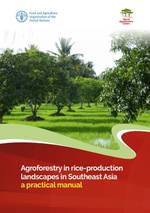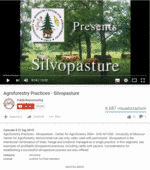Tools
A tool is a resource that supports and guides the implementation of SFM. This section includes all the tools available in the SFM Toolbox, which can be in form of publications, e-learning videos, software etc.
You can browse the Tools through keywords in the free search box or you can narrow the search using the filters on the right side of the page.
This publication represents an output of work conducted on trees outside forests (TOF) as part of Regional Rice Initiative (RRI) Phase 2. It provides practical information on the status, benefits and techniques related the use of TOF in rice production landscapes in Southeast Asia. The manual describes the main rice-based...
This document attempts to present the current state of knowledge on agroforestry parkland systems. These systems, which for many local populations are very important for food security, income generation and environmental protection, are found primarily in the semi-arid and sub-humid zones of West Africa. The document first provides a thorough...
In alley cropping, an agricultural crop is grown simultaneously with a long-term tree crop to provide annual income while the tree crop matures. Fine hardwoods like walnut, oak, ash and pecan are favored species in alley cropping systems and can potentially provide high value lumber or veneer logs. Learn how...
In a forest farming practice, high-value specialty crops are grown under the protection of a managed forest canopy that has been modified to provide the correct shade level. The practice also includes the production of non-timber forest products for specialty markets. In this segment, examples of successful forest farming operations,...
Riparian forest buffers are natural or re-established streamside forests made up of tree, shrub and grass plantings. They buffer non-point source pollution of waterways from adjacent land, reduce streambank erosion, protect aquatic environments and enhance wildlife. Learn the basics of establishing a riparian buffer practice and how profitable products, like...
Silvopasture is the intentional combination of trees, forage and livestock managed as a single practice. In this segment, see examples of profitable silvopasture practices, including cattle with pecans. Considerations for establishing a successful silvopasture practice are also offered.
Windbreaks are planned and managed as part of a crop and/or livestock operation to enhance production, protect livestock and control soil erosion. The beneficial interactions of windbreaks upon crops and cattle are presented in this segment.
The advent of agricultural monocultures in the United States has not only contributed to the decline in water and soil quality, wildlife habitat, and other natural resources, it’s also reduced profit margins for many farmers and ranchers (NRC, 1993). Marketing uncertainties, increasing fuel and fertilizer costs, high interest rates, and...
This book concentrates, but not exclusively, on insects, diseases and woody species that have the potential to become invasive. An integral part of sustainable forest management includes measures to protect forests from natural threats such as fire, insects and diseases. Increasingly, an additional, and more severe threat, has been affecting...
Developing countries that participate in REDD+ must develop a Reference Level (FREL/FRL). These benchmarks assess a country’s REDD+ performance by providing a quantitative way to measure emissions reductions and removals.
As of February 2019, 39 countries had submitted 44 FRLs to the UNFCCC. The submitting countries represent 1.5 billion hectares of...










